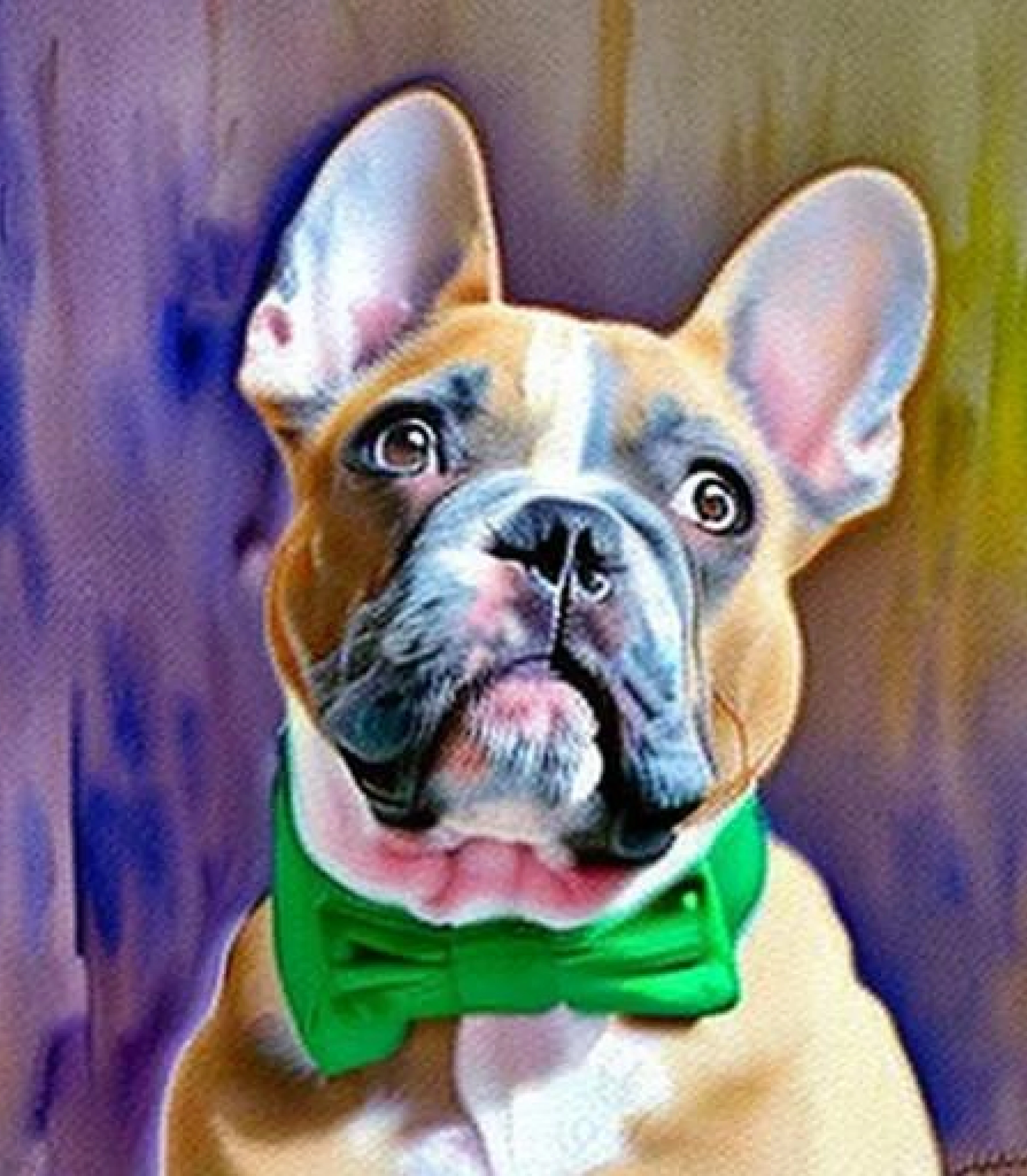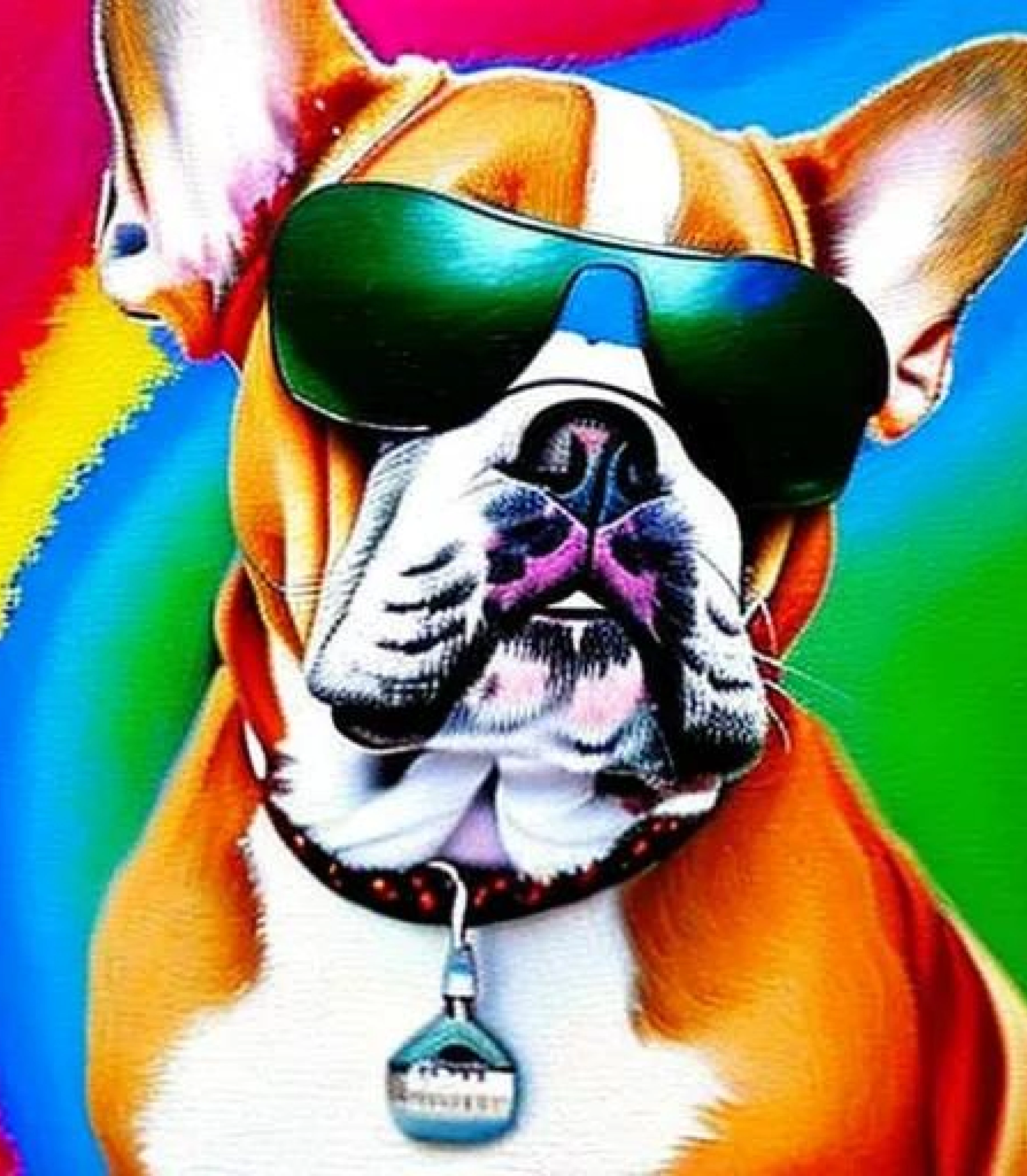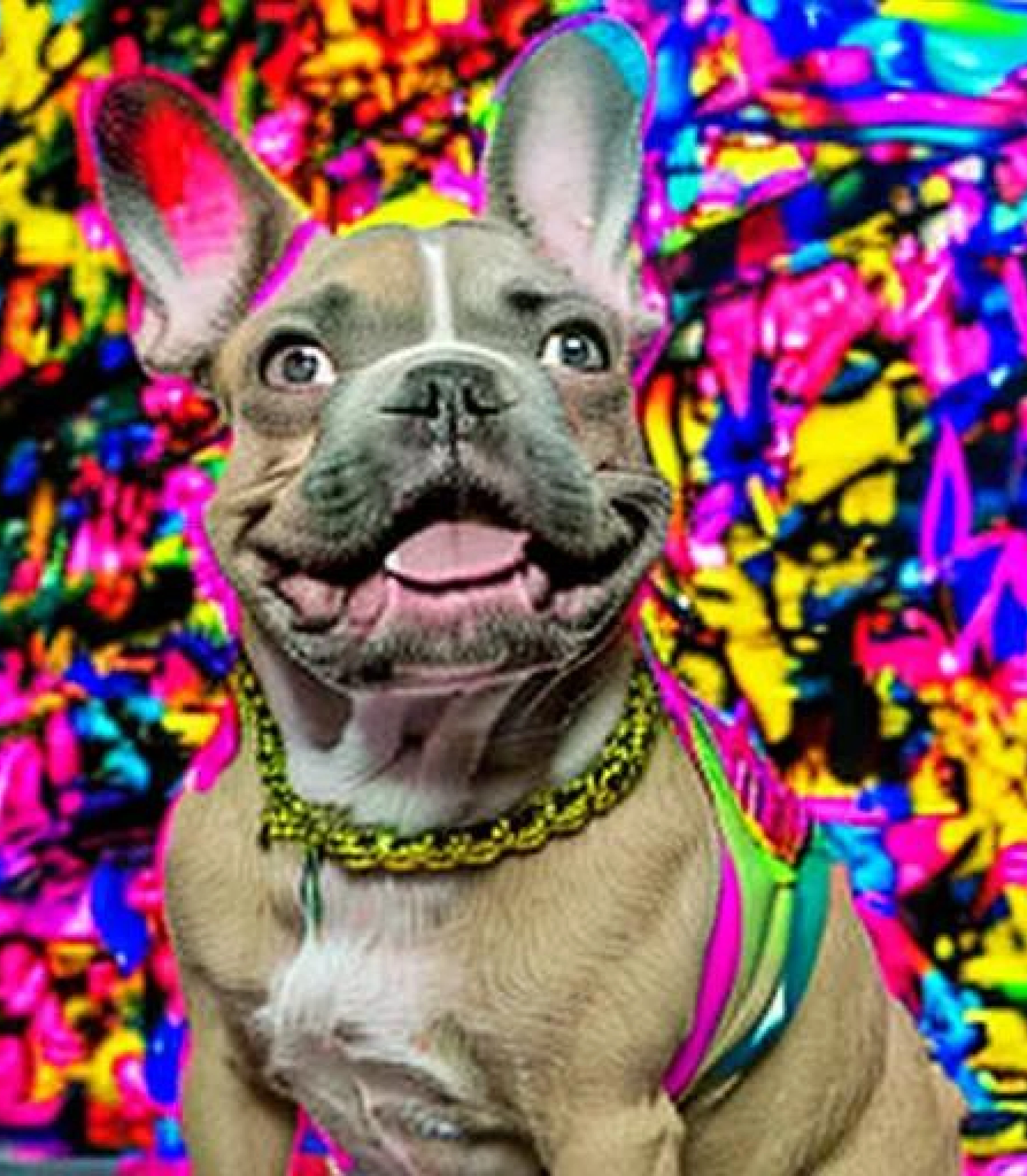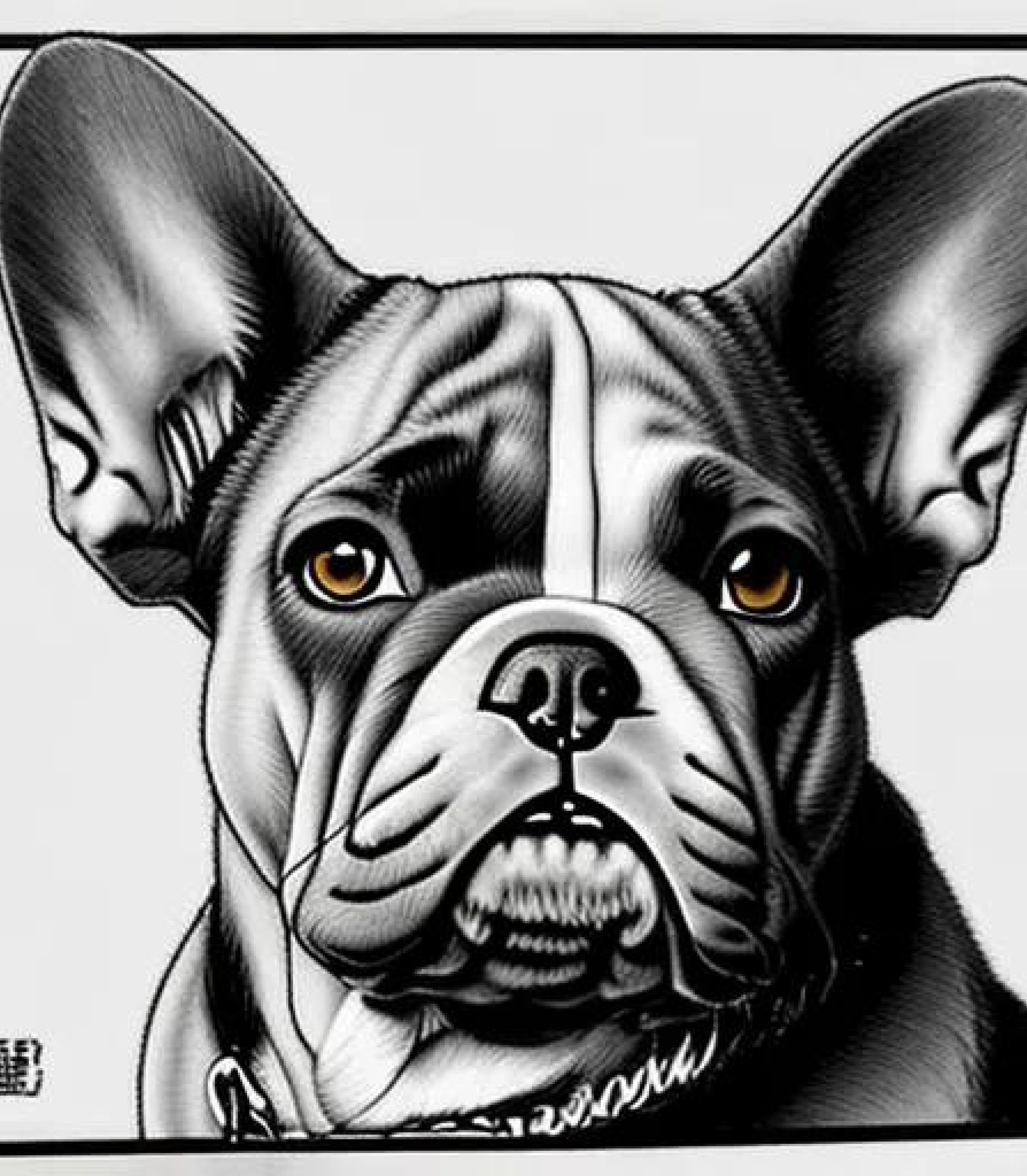The French Bulldog, with its unmistakable bat-like ears and playful personality, has captured the hearts of dog lovers worldwide. In this blog post, we will explore the unique characteristics, history, and care requirements of the lovable French Bulldog.
The History and Origins
The history of the French Bulldog can be traced back to the early 19th century. The breed’s origins can be found in England, specifically among the lace workers in the Nottingham region. These lace workers, facing difficult economic circumstances during the Industrial Revolution, sought better opportunities in France. Along with their belongings, they brought their small bulldog companions.
In France, these English Bulldogs were crossbred with local French terrier breeds, such as the Rat Terrier and the Toy Bulldog. This crossbreeding led to the development of a new breed with unique characteristics. The offspring inherited the compact size and distinct bat-like ears of their English Bulldog ancestors but acquired a distinct charm and personality of their own.
Originally known as Bouledogues Français, these dogs quickly gained popularity in France. They became sought-after companions of the Parisian bourgeoisie, artists, and writers. Their endearing and affectionate nature, coupled with their small size, made them a favourite choice for those seeking an ideal lapdog and companion.
By the late 1800s, French Bulldogs had become a common sight in Paris. They frequented cafes, artist studios, and high society gatherings, becoming synonymous with the city’s cosmopolitan lifestyle. Their popularity soared, and breed enthusiasts formed breed clubs, such as the French Bulldog Club of France in 1880, to promote and preserve the breed’s unique characteristics.
As the breed’s popularity grew, French Bulldogs began to make their way across the Atlantic. They caught the attention of Americans, particularly wealthy industrialists, and soon gained popularity in the United States. The American Kennel Club (AKC) recognized the breed in 1898, further solidifying its presence and status.
In the early 20th century, breeders on both sides of the Atlantic focused on refining the breed’s characteristics. They aimed to enhance the unique traits that define the French Bulldog, such as its distinctive “bat ears,” compact and muscular physique, and its friendly and affectionate temperament. Selective breeding helped establish a consistent breed standard and maintain the breed’s unique appearance and personality.
In recent times, the French Bulldog has gained significant attention in popular culture. Celebrities, influencers, and social media have played a role in amplifying its popularity, making it a trendy and sought-after breed.




Distinctive Features
With their compact bodies, muscular build, and large, expressive eyes, they exude an irresistible charm. However, the hallmark feature of a French Bulldog is undoubtedly its adorable “bat ears,” which are naturally upright and set wide apart on the head. Their short, smooth coats come in a variety of colours, including fawn, brindle and pied.
Temperament and Personality
Despite their small stature, French Bulldogs possess a big personality. They are known for being affectionate, loyal, and sociable. Frenchies thrive on human companionship and adore being part of their family’s activities. Their playful and comical nature often leaves their owners amused and entertained. French Bulldogs are generally good with children and other pets, making them excellent family pets.




Health
French Bulldogs are generally a robust and healthy breed, but they are prone to some specific health issues. Due to their short snouts and compacted airways, they can experience respiratory problems, particularly in hot weather. Their unique anatomy also makes them vulnerable to overheating, so it’s crucial to keep them cool and avoid strenuous exercise during hot spells.
French Bulldogs in Art
French Bulldogs have long captivated the imagination of artists, making appearances in various forms of artistic expression throughout history. Their distinctive appearance and endearing personalities have made them popular subjects in paintings, sculptures, photography, and even contemporary digital art.
Artists have immortalised French Bulldogs in their paintings, showcasing their presence as beloved companions and reflecting the breed’s widespread popularity during different eras. One such example is a captivating pet portrait painted by Henri de Toulouse-Lautrec in 1897. This pastel picture beautifully captures the essence of a French Bulldog and its significance as a cherished pet during that time.
Another notable artwork that showcases the charm of French Bulldogs is Carl Reichert’s oil painting titled “Pair of French Bulldogs.” This painting beautifully portrays two French Bulldogs, emphasising their lovable and distinctive features. The artwork serves as a testament to the breed’s appeal and its ability to inspire artists throughout history.
The French Bulldog features in the portrait of the Russian bass opera singer Chaliapin, painted by Boris Kustodiev in 1921. In this painting, the French Bulldog adds a touch of charm and companionship to the depiction of the singer, further emphasising the breed’s connection with people.
French Bulldogs have also found their way into family photographs, posing alongside their owners and becoming a part of cherished memories. One famous photograph captures King Edward VII posing with his French Bulldog while on a hunting excursion. This image exemplifies the close bond between French Bulldogs and their families.
Even in the realm of contemporary art, French Bulldogs continue to inspire creativity. One notable example is Andy Warhol’s 1986 painting titled “Moujik,” which portrays Yves Saint Laurent’s French Bulldog. Andy Warhol’s pop art images of Moujik were utilised by Yves Saint Laurent for over 20 years, appearing on small seasonal greetings posters titled “Love.” These images perfectly capture the essence of the breed and its enduring appeal.
In addition to traditional art forms, French Bulldogs have become popular subjects in the realm of digital art and social media. The rise of platforms like Instagram has led to a surge in French Bulldog-themed accounts, where owners showcase their pets in various creative and whimsical ways. From dressed-up Frenchies in elaborate costumes to adorable and comical poses, these digital representations celebrate the breed’s lovable nature and have become a source of joy for dog enthusiasts worldwide.
French Bulldogs’ popularity in art can also be attributed to their representation in popular culture. Their appearance in movies, advertisements, and cartoons has further solidified their place as cultural icons. Films like “Due Date” and “The Secret Life of Pets” have featured French Bulldogs as endearing and comical characters, adding to their popularity and allure.
French Bulldogs have left a lasting impression in the world of art. From classic paintings by revered artists to contemporary digital representations, their unique physical features and lovable personalities have made them popular subjects in various art forms. Whether captured in the strokes of a painter’s brush, the lens of a photographer’s camera, or the creativity of digital artwork, French Bulldogs continue to inspire and delight both artists and art enthusiasts alike with their undeniable charm.
The French Bulldog, with its irresistible charm and affectionate personality, has become a beloved companion for families worldwide. With their unique physical features, playful nature, and sociable temperament, French Bulldogs continue to bring joy and laughter to countless households. If you’re looking for a loyal and adorable furry friend, the French Bulldog might just be the perfect addition to your family.
Fun Facts
- French bulldogs are between 27cm and 33 cm tall. Males weigh 12.5kg and females weight 11 kg.
- French Bulldogs have a lifespan of 10 -12 years.
- French Bulldogs need up to 1 hour of an exercise a day, which should be split into a few short walks or off lead play sessions. It’s important not to overexert them, especially in warm weather.
- There are 9 breed standard colours and 14 non breed standard colours.
- In 1902 the French Bulldog Club of England was formed.
- French bulldogs were officially recognised by the U.K Kennel Club in 1906.
- The breed has experienced a remarkable surge in popularity in recent years. Between 2009 and 2015, registrations for the breed increased by tenfold. In 2015 French Bulldogs were ranked the third most popular breed in the U.K.
- French Bulldogs are not good swimmers due to their bulky torsos, flat snouts, thick muscles, and heavy bones, Their physical structure is not designed for extended flotation in water. Additionally, because of their short snouts, they need to tilt their faces higher to keep them out of the water. This upward tilt makes it more challenging for them to stay afloat.
- French bulldogs are known as Frog Dogs as they like to lie on their stomach and splay their legs comfortably behind them like a frog.



